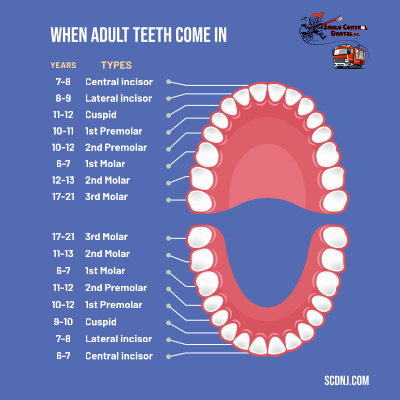Does your child have erupted teeth behind their baby teeth
June 5th, 2021
When a permanent tooth starts erupting under a baby tooth, the root of the baby tooth is resorbed and the permanent tooth takes its place.
Sometimes the permanent tooth starts erupting in the mouth while the baby tooth is still there - this is known as shark teeth because of its appearance. It usually occurs in the lower and upper front teeth. If the baby tooth does not get out itself then it has to be extracted and the permanent tooth will naturally come in its place.
What causes Shark teeth?
Most commonly, at the age of 5-7 years, the permanent teeth start to push the baby tooth so they shed off. But sometimes the baby teeth don't want to leave the baby’s mouth and the permanent one comes right behind it and causes two rows of teeth to exist, one of the adult teeth and one of the baby teeth.

When should baby teeth fall out?
In total, a child has 20 baby teeth ( 10 upper and 10 lower) which start erupting at the age of 6 months. All these teeth come off before the age of 12 years. The permanent adult teeth are 32 in total and start erupting from the age of 6yrs.

What should you do if your baby has 2 rows of teeth?
For this case, there are some solutions for you. If the baby tooth is loose, tell your child to wiggle it out so it can come out on itself naturally. If the tooth is not loose you can take an appointment with a Children's general dentist. The dentist will perform a tooth extraction to remove the baby's tooth. If one of the front teeth grows the teeth behind it then it's most likely possible that the other one will do the same because pairs of teeth often act the same way. So instead of two visits, you can wait for the other adult tooth to grow so you can get your child’s teeth extracted in the same visit.
If your child is experiencing erupted teeth behind their front teeth,
Call the Paterson Office (973) 742-4200 to schedule an appointment or
Passaic ( 973) 574-1000
Union City(201) 325-8444
Serving Paterson, Passaic, and Hudson NJ, and the surrounding communities, we offer comprehensive oral health services ranging from routine cleanings to emergency treatment. We are committed to creating a warm, welcoming environment to keep all members of the family comfortable in the office.
Find reviews and updates on Facebook, learn more about our practice online, or give us a call (973) 742-4200



